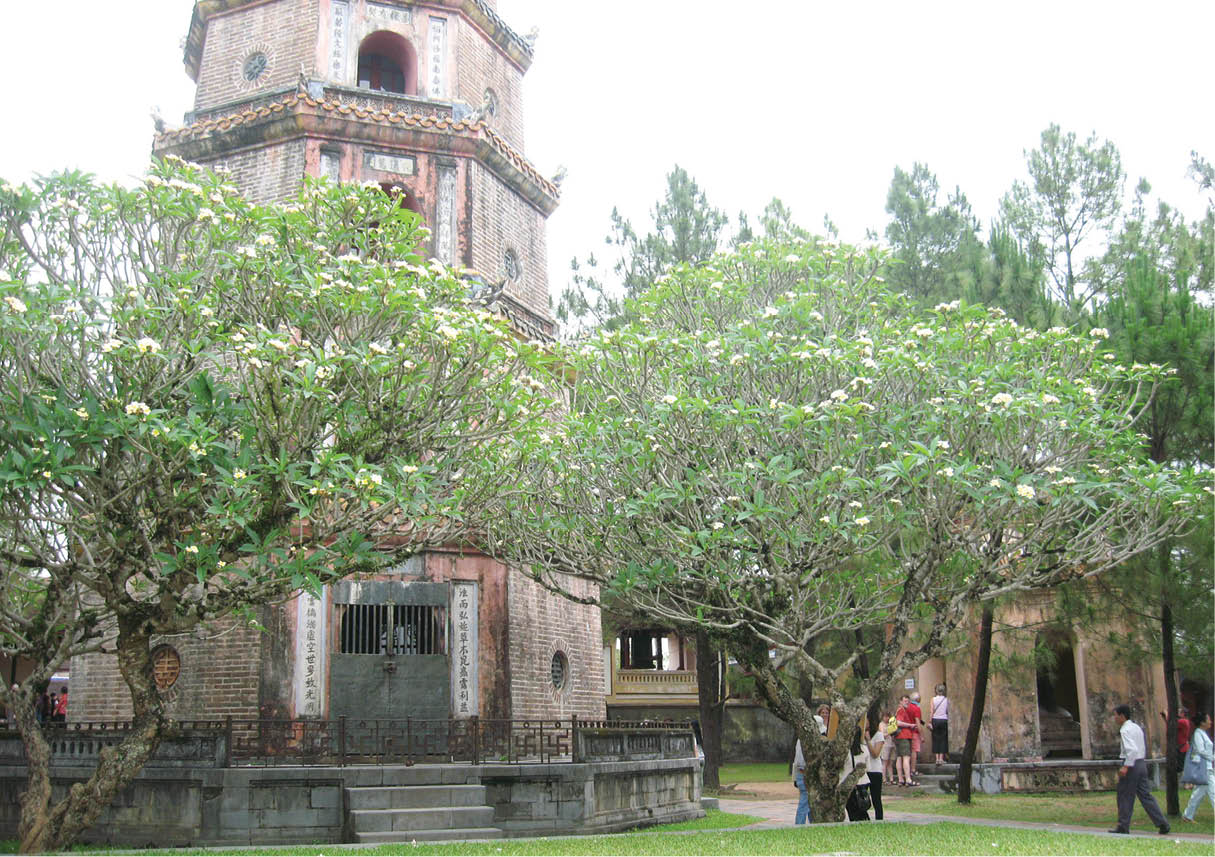
Thien Mu Pagoda is a famous symbol of Hue
Lord Nguyen Phuc Chu and the pagoda
In 1601, Lord Nguyen Hoang had Thien Mu Pagoda built on Ha Khe Hill next to the Perfume River. The Nguyen lords and the successive Nguyen kings considered it a national pagoda. They had it repaired, expanded, embellished, and preserved, making it unique. For more than 420 years of ups and downs, Thien Mu has always been a great pagoda and one of the most typical symbols of the ancient imperial capital.
According to Assoc. Dr. Nguyen Phuoc Buu Nam, Chairman of the Nguyen Phuc Council of Vietnam, the Nguyen dynasty had been connected with Thien Mu Pagoda for 344 years, from the time when Lord Nguyen Hoang built the pagoda in 1601 until when Emperor Bao Dai abdicated in 1945. Everything from the architectural concept to the philosophical spirit behind Thien Mu Pagoda, from the overall layout to such structures as the obelisks, the tower, the drum pavilion, the bell pavilion, the shrines, from statues to decorative patterns and ornamental plants and trees, all reveal the influence of the talented court architects and the emperors of the dynasty with their scholastic eyes.
Especially, Lord Nguyen Phuc Chu played an important role in the overall architecture as well as the space of the pagoda. In 1710, he had the beautifully-embellished Great Bell cast, which was considered the biggest in the Inner Realm. In 1714, the pagoda was repaired to become an unprecedented magnificent pagoda. The great bell was recognized as National Treasure in 2013.
According to Dr. Phan Thanh Hai, Director of the Department of Culture and Sports, in 1601, Lord Nguyen Hoang had the pagoda built. In 1665, Lord Nguyen Phuc Tan had it repaired, but it was not recorded in detail in historical documents. Not until the great restoration in 1714 under Lord Nguyen Phuc Chu’s era that the architectural appearance of the pagoda was fully depicted.
At that time, the pagoda had tens of structures such as Thien Vuong Shrine, Ngoc Hoang Shrine, Thap Vuong Shrine, Dai Hung Hall, the sutra pavilion, the bell pavilion, the drum pavilion, Van Thuy House, Tri Vi House, the lecture hall, the meditation hall, the monks’ quarters, Ty Gia Garden with a large house for the abbot, etc.
According to Most Venerable Thich Hai An, Head of the Executive Board of Lieu Quan Buddhist Cultural Center, Lord Nguyen Phuc Chu contributed greatly to the pagoda with structures, artifacts, and his piousness. So far, Thien Mu Pagoda has been repaired many times and the biggest repair was under Lord Nguyen Phuc Chu’s era. That leaves traces not only on the complex of structures at the pagoda, but also in documents and literature.
From 2003 to 2006, the 18 different structures at Thien Mu Pagoda were repaired. That was considered the largest repair after hundreds of years by Hue Monuments Conservation Center in collaboration with the Central Branch of Institute for Building Science and Technology and the pagoda with a total fund of more than VND26 billion. The ruined 7-degree-tilted Phuoc Duyen tower was adjusted and reinforced using new technology.
According to Dr. Phan Thanh Hai, Thien Mu Pagoda attracts tourists from all over the country not only by its beautiful scenery and historical values, but also by its precious antique artifacts. The bronze gong cast in 1677 is a beautiful treasure of high artistic value; the horizontal board donated by Lord Nguyen Phuc Chu himself in 1714 is also a rare wooden antique; the Great Bell, cast in 1710, is recognized as National Treasure, etc. Those antiques contribute to increasing the great cultural and historical values of Thien Mu Pagoda.
Every year, the pagoda receives quite a large number of visitors, which raises the issue of protecting the environment and the pagoda itself for people now and for future generations. Currently, Hue Monuments Conservation Center regularly supervises, protects, and embellishes the area around Thien Mu Pagoda in order to preserve and promote its value.
The large number of visitors also poses the difficult question about the balance of conservation and development. It requires the effort and cooperation of the authorities, tourist entrepreneurs, people, and the pagoda.
Story and photo: MINH HIEN